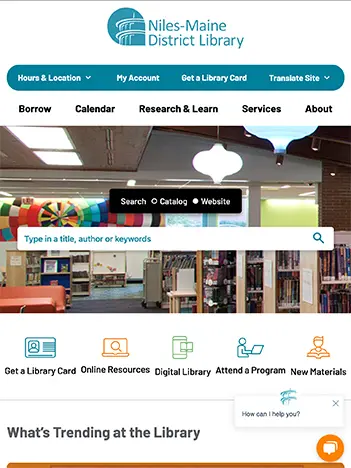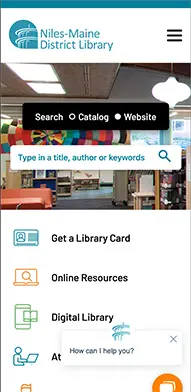At this point we have already established that your website needs to be oriented toward revenue growth, whether that’s through leads, online sales, walk-in visits, or some other method. And to a certain degree, digital marketing always comes down to a numbers game. Some percentage of visitors to your website will decide to do business with you. All things being equal, more visitors equals more business.
That brings us to the next myth, which tells us that your business website needs to appeal to a wide range of buyers within your market or industry. The idea here is to push the numbers up as high as possible – through design, content, ads, SEO, etc.

If you are thinking about web design outcomes on a spreadsheet, then this line of thinking would make a lot of sense. Unfortunately, we do business in the real world. And when you’re dealing with live customers you find that things like percentages and conversion rates don’t always line up the way you think they would.
Although it might feel like it runs contrary to basic math, our advice would be to narrow your website to as small an audience as you can from a profitability perspective. In this article we’ll explain why.
Narrow and Deep vs. Wide and Shallow
As we mentioned before when referencing the basics of search engine optimization, the internet is a crowded place. If you run a local brick-and-mortar business, there isn’t a huge risk that your three closest competitors are all going to open locations on the same block. Online, though, it’s incredibly likely that you’ll have five or ten competing websites show up next to yours on Google. There might be many times more than that.
In order to stand out from those competitors, and to make it easy for your best customers to find you, you’ll want to drill down your messaging to a very specific niche. You might be the best chiropractor in Richmond, have the number-one dog grooming service in Alexandria, or be the best B2B medical billing processor in the world.
These are fictional examples in the sense that we haven’t worked with specific companies that fit these profiles. However, they all project a very specific point of view. Each of them is quick, clear, and easy to both explain and understand.
The point is to make your market positioning as narrow and deep as possible. You want to do (or sell) something that’s for a very specific audience. When you do so you make it much easier for your best potential customers to identify themselves and resonate with what you are offering. That, in turn, boosts response and conversion rates throughout your site. Or to put things in simpler terms, the visitors who fit your profile of an ideal customer (buyer persona) are more likely to contact you and take the next step.
There is a flipside to this, of course, which is that the narrower you make your website and online marketing campaigns, the more people you “miss.” That is, lots of folks will arrive on your pages, see your content, and decide that your website and business aren’t for them. That might seem disheartening if you’re stuck on spreadsheet thinking, but it can actually be a great thing.
Again, we’ll grant you that the idea of turning away customers on the internet seems like a bad idea. But we think it could be the best thing for your business in the short run and the long run. Let us explain why.
Narrow Marketing Is Easier and More Profitable
If we were speaking to an audience of business owners and suggested that they should set up their websites for smaller audiences and fewer sales, we think we would get more than a few uncomfortable looks. Even so, we’ll stick with our position. As it turns out, narrowing your website to a smaller audience base is almost always the smarter, more efficient move. That’s because it brings a number of benefits:
- Narrow marketing leaves you with fewer website visits but more value from each visit. For example, if you only have 100 visitors to your website but turn 15% of them into customers (15), you’ve done better than if you had 1,000 website visitors but only converted 1% (10) because your content felt more generic.
- When you are targeting a very specific type of buyer, you can use fewer ads and less content. That means your costs (measured in time or money) will be a lot lower.
- You’ll also be able to stand out in your market a lot more quickly. That means a narrower marketing strategy pays off quite a bit faster than a broad one.
- Google, Facebook, and the other major web portals love websites that are targeted narrowly because they are more original and authoritative. That makes it easier for you to stick out on search and social platforms.
- When you have a narrower target audience, you get fewer leads and sales from the buyers who aren’t a good fit for what you have to sell. You lose out on that revenue, but you also have fewer returns and deal with fewer negative reviews. You waste less time and your reputation gets better.
We could go on with even more benefits, but they all come back to the same thing: efficiency. It’s just smarter to build your business, and by extension your website, with a narrow market in mind. It makes you more valuable and visible to a smaller slice of the population, which is a straighter path to profitability.
And besides, putting a narrow focus on your website doesn’t necessarily mean that you will be stuck with it forever. In the same way you can (and probably should) launch a smaller version of your web presence and then build up over time, you can always expand into bigger portions of your market. Or, if you want to see profits grow, you can go deeper within your segment.
In other words, you could expand your search engine optimization targets, build a bigger advertising campaign, or take steps to otherwise draw more traffic to your website after you’ve seen profits from your narrow approach. In fact, you’ll probably have to because your business will change and evolve over time.
Most business owners learn this lesson one way or the other. That’s because “success” with a website can be troublesome if you only follow basic numbers. It’s better to have lots of visitors and leads than it is to have none. But if those inquiries aren’t a good match for your business and end up wasting your time, then you might end up in a position where you’re unable to grow or are actually losing money despite the new revenues coming in.
Hopefully you now understand why the myth of “more traffic equals more profitability” doesn’t hold up as cleanly as many business owners would expect. That just leaves you with one important question.

Who Is Your Perfect Buyer?
Narrowing in on your perfect buyer and designing your website accordingly is an easy task… just as long as you know who those buyers are and what they want. If you don’t, things get complicated really quickly.
Most of the clients we work with know who they need to attract to their websites. They’ve either got a handful of customers who account for the vast majority of their sales or have a clear vision of who those individuals will be and what they look like.
If you couldn’t say whom your website should be built for, or have some doubts about the strength of your answer, then address those before you get serious about launching your website and marketing it to the public. Talk to some of your existing buyers, or reach out to colleagues who aren’t direct competitors. Run a survey online or speak to some industry experts. Do whatever it takes to discover the secret to your current and/or future success.
Your website design team can do a lot of great things for you, like share your business with the world and introduce you to tons of customers. What they can’t do, though, is tell you what you’re good at or invent an entirely new business model. We know because we occasionally run into entrepreneurs who seem to want help in that area.
It’s your job to figure out whom you’re selling to and why. Then, use that knowledge to start with a narrow market and go deep with your products and services. It’s not as flashy as trying to sell millions of products to half the world, but it’s a much more proven path to success.






